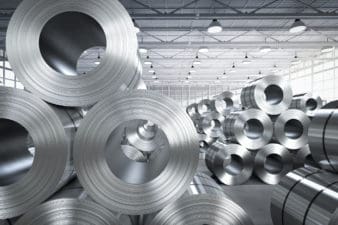The much-vaunted hedge against uncertainty, gold, has suffered its longest fall in 15 years and is now trading at just above US$1,100 per ounce. As a result, gold miners have been hit hard, their stocks prices tumbling in value with the NYSE ARCA Gold Bugs Index plunging by 20% over the last month. This has brought out the bargain hunters. Many have snapped up gold stocks as they bet on gold rebounding in the immediate future.
However, I don’t expect it to bounce back any time soon because of a number of factors highlighting that the pain is far from over for gold miners.
Now what?
One of the most significant reasons is the increasingly pessimistic outlook for gold, which will probably slip under US$1,000 per ounce during 2015. This can be attributed in part to its lack of utility because unlike silver it has no major industrial uses. During 2014 over half of the silver produced went to industrial applications, whereas only 9% of gold was used in industrial applications.
The majority of gold is used either for investments or the manufacture of jewellery, which is really just a de facto form of an investment. This is because it is perceived to be the ultimate store of value in times of crisis, which according to the gold bugs, makes it an important hedge against geopolitical and macroeconomic uncertainty.
Despite this attribute and a number of recent crises, including fears of an economic hard landing in China, the Eurozone’s economic downturn, and escalating conflict in the Middle East, the price of gold has continued to fall.
The reason for this is that its perception as a store of value is imputed, and these crises are not having a deeply destabilizing impact on other developed economies, most importantly, the U.S.
In fact, the U.S. economy has continued to grow strongly, stimulated in part by the recent collapse in oil. As a result, gold is under extreme pressure from a strong U.S. dollar, while the U.S. economic revival now sees an interest rate rise on the horizon for the first time since the global financial crisis.
This is bad news for gold, because not only does the value of the U.S. dollar and gold share an inverse relationship, but gold is a zero-yield asset, meaning that it doesn’t pay income. As a result, the opportunity cost of holding gold increases as rates rise because that money could be better deployed in other investments that earn higher returns.
Furthermore, higher interest rates don’t bode well for gold miners in the harsh operating environment we are now witnessing because the end result is higher borrowing costs for what is a capital-intensive industry. This makes those miners with considerable debt, such as Barrick Gold Corp. (TSX:ABX)(NYSE:ABX), which has over US$12 billion in debt, unattractive investments.
Weak gold prices also makes those miners with high operating costs, such as IAMGOLD Corp. (TSX:IMG)(NYSE:IAG) and Kinross Gold Corp. (TSX:K)(NYSE:KGC), which had second-quarter all-in-sustaining costs of US$1,076 and US$1,011 per ounce, respectively, very unappealing investments.
So what?
Gold is fast becoming a very unattractive asset. It seems that it can only continue to fall in value. This makes gold miners extremely unappealing because of their leveraged connection to the price of bullion, which means that their stocks prices will fall faster than the price of gold. On top of this, there are the risks associated with higher borrowing costs and weaker margins which, when you add all of these factors, makes them terrible investments.





